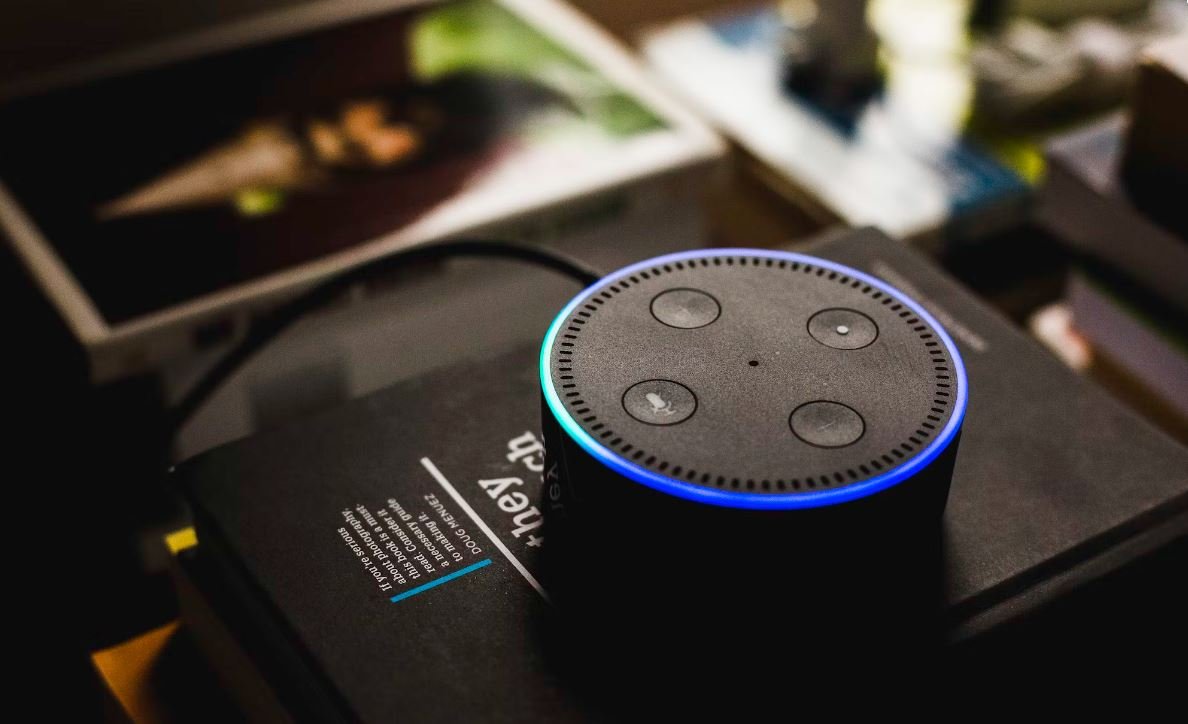AI in News Media
The integration of Artificial Intelligence (AI) in the news media industry has revolutionized the way news is created, curated, and consumed. With its ability to analyze massive amounts of data, AI is enhancing news reporting, personalizing content delivery, and improving the overall news experience for users.
Key Takeaways
- AI is transforming news media by revolutionizing news reporting and personalizing content delivery.
- AI-powered algorithms analyze vast amounts of data to improve news accuracy and relevance.
- Chatbots and virtual assistants are being used to provide real-time news updates and engage with audiences.
The Rise of AI in News Media
*Artificial Intelligence* has become increasingly prevalent in newsrooms, enabling journalists to extract insights from massive datasets and streamline the news creation process. With AI-powered algorithms, newsrooms can sift through vast amounts of data, social media feeds, and online content to identify trends, fact-check information, and deliver real-time news updates to readers.
AI’s ability to analyze complex data sets allows journalists to better understand and present the nuances of a story. By leveraging natural language processing and machine learning, AI is transforming raw data into compelling narratives that resonate with readers.
The Personalization of News
With the help of AI, news organizations are able to personalize content delivery to meet individual preferences and interests. AI algorithms can analyze user data such as browsing habits, reading behavior, and historical interactions to curate customized news feeds for each user. This ensures that readers receive news that is relevant and tailored to their specific needs and interests.
*By tailoring content to individual readers, news organizations can improve engagement and build loyalty among their audience.*
| Benefits of AI in News Media |
|---|
| Improved news accuracy and fact-checking |
| Real-time news updates and notifications |
| Enhanced content personalization |
| Streamlined news creation process |
The Power of Chatbots and Virtual Assistants
Chatbots and virtual assistants are transforming how news media interacts with its audience. These AI-driven technologies are capable of providing real-time news updates, answering user queries, and engaging in conversation. Chatbots can be integrated into messaging platforms, websites, and social media channels, allowing news organizations to provide instant and personalized news experiences to users.
Chatbots and virtual assistants are also revolutionizing news customer support, enabling users to get quick answers to their queries and troubleshooting assistance in a timely manner.
| Benefits of Chatbots and Virtual Assistants in News Media |
|---|
| 24/7 availability for news updates and information |
| Personalized user interactions and recommendations |
| Efficient customer support and troubleshooting |
| Increased user engagement and satisfaction |
The Future of AI in News Media
The integration of AI in the news media industry is driving innovation and promising exciting developments in the future. As AI technologies continue to evolve, we can expect:
- Improved news accuracy through advanced fact-checking algorithms.
- Enhanced content personalization to cater to individual interests and preferences.
- Efficient newsroom operations through automated tasks and data analysis.
| Future Possibilities with AI in News Media |
|---|
| Deepfake detection to combat misinformation |
| Augmented storytelling experiences through virtual reality |
| Automated news writing and content generation |
| Hyper-localized news delivery based on geolocation |
The Future is AI-Driven
As AI increasingly becomes integrated into news media, the industry is witnessing significant transformations in news reporting and personalized content delivery. From advanced fact-checking to personalized news recommendations, AI is revolutionizing the way news is consumed and understood. With the constant evolution of AI technology, the future of news media looks promising and exciting.

Common Misconceptions
Misconception #1: AI will replace human journalists entirely
Many people believe that AI will entirely replace human journalists in news media, leading to job losses and a lack of human touch in reporting. However, this is not entirely true.
- AI can support journalists by automating repetitive tasks, such as data analysis or fact-checking.
- Human journalists possess the ability to provide context, analysis, and emotional connection to news stories, which is challenging for AI to replicate.
- The collaboration between AI and human journalists can enhance news coverage, offering a combination of efficiency and quality.
Misconception #2: AI generates biased news
There is a common misconception that AI, being a product of data and algorithms, will generate biased news articles. However, this perception is not entirely accurate.
- AI algorithms can be calibrated and trained to reduce bias, ensuring fair representation and impartial reporting.
- The responsibility for training AI lies with the developers and journalists who can input diverse data to counteract biases.
- While AI algorithms may still have room for improvement, they are not inherently biased, but rather reflect the biases present in the data they are trained on.
Misconception #3: AI is infallible in fact-checking
Another misconception is that AI, particularly in fact-checking, is error-free and infallible. However, AI systems are not immune to mistakes.
- AI fact-checking tools can sometimes struggle to differentiate complex nuances, satire, or sarcasm, leading to potentially inaccurate results.
- AI systems require continuous fine-tuning and improvement to handle the evolving landscape of misinformation and fake news.
- Human oversight and critical thinking remain crucial to ensure the accuracy and context of information provided by AI fact-checking systems.
Misconception #4: AI is solely responsible for determining news content
Contrary to popular belief, AI does not have sole control over determining news content in the media. Human involvement remains essential for decision-making.
- AI technologies can assist in personalized news recommendations based on user preferences and behavior, but final selection is often human-driven.
- Editors and journalists make decisions on what stories to cover, prioritizing news based on relevance, importance, and public interest.
- AI is best utilized as a tool to aid journalists in sifting through vast amounts of news data and generating insights, rather than dictating content directly.
Misconception #5: AI and automation eliminate the need for newsrooms
There is a misconception that AI and automation in news media render physical newsrooms obsolete. However, newsrooms continue to play a vital role.
- Newsrooms provide collaborative environments where journalists can brainstorm, fact-check, and pool resources, fostering creativity and thorough reporting.
- Human oversight is crucial in maintaining ethical standards, accountability, and ensuring proper verification of news stories.
- While technology plays a crucial role, the expertise and professionalism of journalists in newsrooms are fundamental in delivering accurate and reliable news to the public.

In recent years, the integration of artificial intelligence (AI) into news media has revolutionized the way news is gathered, analyzed, and disseminated. From automated content creation to personalized news recommendations, AI has provided both journalists and consumers with new tools and experiences. Here, we present ten captivating tables showcasing the transformative impact of AI in news media.
1. Sentiment Analysis of News Stories
This table presents the sentiment analysis results of various news stories, indicating whether the overall tone is positive, negative, or neutral. AI algorithms parse the language used in articles to provide insights into public sentiment towards specific topics or events, aiding journalists in creating more captivating headlines.
2. Automated Fact-Checking Accuracy
Highlighting the power of AI in accuracy, this table displays the percentage of factual claims accurately checked by automated fact-checking systems. By leveraging machine learning algorithms, these systems can quickly verify claims made in news articles, reducing misinformation and enhancing journalistic integrity.
3. News Content Generated by AI
This table depicts the amount of news content generated by AI systems in comparison to human journalists. AI algorithms capable of writing coherent and informative articles have contributed significantly to the news industry, increasing both the speed and volume of news production.
4. Evolution of Breaking News Speed
Comparing the speed at which breaking news is reported, this table demonstrates how AI algorithms have facilitated swift news delivery. AI-powered systems can instantly analyze vast amounts of data, identify impactful events, and report valuable information to the public faster than ever before.
5. Personalized News Recommendations
Presenting data on user engagement and satisfaction, this table illustrates how personalized news recommendations, powered by AI, have enhanced reader experiences. By analyzing user preferences and behavior patterns, algorithms can curate content tailored to individual interests, increasing user engagement and retention.
6. Image Recognition in News Articles
This table showcases the accuracy of AI-powered image recognition systems used to complement news stories. By identifying objects, locations, and people in images, AI algorithms assist journalists in providing more comprehensive visual storytelling.
7. AI-Powered Language Translation Accuracy
Highlighting advancements in language translation, this table displays the accuracy percentage of AI-powered translation systems. Such tools enable journalists and news organizations to overcome language barriers, facilitating the exchange of information and fostering global connectivity.
8. Natural Language Understanding Performance
This table presents the performance of AI algorithms in comprehending natural language, such as that used in interviews or speeches. By processing spoken or written language, AI systems can extract essential information, aiding journalists in providing accurate and insightful reporting.
9. News Consumption Habits by Generation
With data on news consumption habits across different generations, this table exemplifies how AI technologies have catered to the preferences of diverse age groups. AI-powered news platforms can adapt news delivery modes, formats, and tones to suit the needs and habits of each generation.
10. Accuracy of AI-Assisted News Editing
This table illustrates the accuracy of AI-assisted news editing tools, showcasing the percentage of errors detected and corrected by AI algorithms. By automating proofreading and grammar checks, AI enhances the efficiency and quality of news editing processes.
In conclusion, AI has greatly transformed the news media landscape, empowering journalists with data-driven insights, enhancing user experiences, and enabling faster content delivery. As AI technologies continue to advance, it is vital for news organizations to embrace these advancements responsibly and ethically, ensuring that AI remains a powerful tool in shaping an informed and connected society.
Frequently Asked Questions
What is AI in News Media?
AI in News Media refers to the application of artificial intelligence technology in the field of news media. It involves the use of advanced algorithms and machine learning techniques to automate various aspects of news production, curation, and distribution.
How does AI impact news production?
AI can significantly impact news production by automating repetitive tasks such as data analysis, content creation, and fact-checking. It can also help journalists and newsrooms in gathering and organizing large amounts of information more efficiently, enabling them to focus on investigative journalism and delivering better quality news stories.
What are some examples of AI being used in news media?
Some examples of AI in news media include automated content generation, natural language processing for sentiment analysis and language translation, recommendation systems for personalized news delivery, and automated fact-checking tools.
What are the benefits of AI in news media?
The benefits of AI in news media include increased efficiency in news production, improved accuracy in reporting, personalized news delivery based on user preferences, enhanced fact-checking capabilities, and the potential to discover new stories and insights from vast amounts of data.
Does AI replace human journalists?
No, AI does not replace human journalists. While AI can automate certain aspects of news production, human journalists are still necessary for critical thinking, investigative reporting, and providing context to news stories. AI complements human journalists by assisting in tasks that are repetitive or require data analysis.
What are the ethical considerations of using AI in news media?
Some ethical considerations of using AI in news media include the potential for biased reporting if algorithms are not designed properly, the impact of personalized news delivery on the diversity of information sources, and the ethical use of user data for personalization and targeting purposes.
What are the challenges of implementing AI in news media?
Challenges of implementing AI in news media include ensuring algorithm transparency and accountability, addressing algorithmic biases, maintaining editorial standards and journalistic integrity, protecting user privacy, and balancing the use of AI with human judgement.
How can AI improve the accuracy of news reporting?
AI can improve the accuracy of news reporting through automated fact-checking tools that can quickly verify claims and detect misinformation. It can also assist in analyzing large amounts of data to provide journalists with reliable and relevant information for their stories.
Can AI be used to detect fake news?
Yes, AI can be used to detect fake news by analyzing the credibility of sources, cross-referencing information with multiple trustworthy sources, and using natural language processing algorithms to identify inconsistencies and misleading information in news articles.
What is the future of AI in news media?
The future of AI in news media holds potential for further automation of news production processes, personalized news delivery tailored to individual preferences, improved fact-checking mechanisms, and innovative storytelling techniques leveraging AI technologies like virtual reality and augmented reality.




